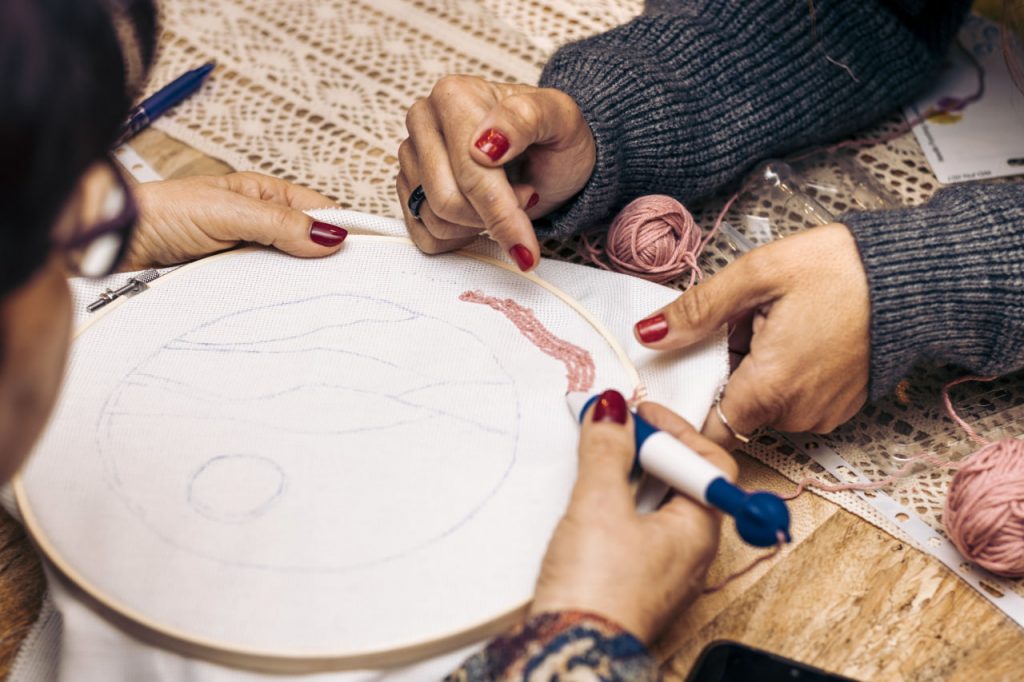Introduction
When it comes to embroidered portraits, thread choice is not just about color, but also texture, sheen, and material. The right thread can bring life to your portrait, emphasizing fine details, shading, and depth. In this article, we’ll explore how to choose the perfect thread for your embroidered portrait, ensuring a stunning result every time.
1. Choose the Right Material
Different types of embroidery threads have varying textures and finishes. The most common materials for embroidered portraits include:
- Cotton Thread: Smooth and matte, cotton threads work well for fine details and provide a more subtle, natural finish. They are ideal for portraits where you want to maintain a realistic skin texture.
- Silk Thread: Silk threads are luxurious and have a beautiful sheen, making them perfect for highlighting certain elements of the portrait, such as the eyes, lips, or any hair details. However, silk threads are delicate and require extra care during stitching.
- Floss vs. Strand Threads: Many embroidery threads come in either floss (six-strand) or single strands. Floss is versatile for both bold and delicate work, while single strands give you more control and a smoother finish, perfect for creating detailed shading.
2. Consider Thread Weight
Thread weight refers to the thickness of the thread. The right weight ensures your portrait looks balanced and detailed. A few options to consider:
- Lightweight Threads: These are great for fine details like wrinkles, eyelashes, and highlights. They are thinner and allow for more precise stitching.
- Medium Threads: These threads are typically used for the majority of the portrait, such as facial features and hair. They balance well for filling in areas without overwhelming the image.
- Heavyweight Threads: Thick threads should be reserved for areas you want to emphasize, such as adding texture to hair or clothing. Too much of this thread can overpower the finer details.
3. Color Matching and Shading
Matching the correct colors to your photo is essential for a realistic embroidered portrait. A few things to consider when choosing colors:
- Skin Tones: Choosing the right mix of skin tone shades is vital for a realistic result. Consider using a variety of light, medium, and dark shades to create dimension and texture.
- Shading: Use slightly darker or lighter shades of the same color to create depth and highlights. This will help you add realism to your embroidery by mimicking light reflections and shadows.
- Blending Threads: For certain sections like the background or hair, blending threads of different colors can help create a gradient effect, giving your portrait a more dynamic and lifelike feel.
4. Experiment with Different Finishes
The finish of the thread can drastically affect the look of your embroidery. Thread finishes can range from matte to shiny, and each finish works better for different portrait elements:
- Matte Threads: These threads are perfect for skin tones, as they provide a natural, soft look without any distraction from shine.
- Shiny Threads: Ideal for adding highlights or creating contrast in specific areas like eyes, jewelry, or hair that needs to pop.
5. Consider the Fabric
The fabric you are stitching on also influences the thread you choose. Denser fabrics like linen or cotton may require thicker threads for better coverage, while lighter fabrics like silk or organza are better suited for finer threads. Make sure to test a small patch before starting your full portrait to ensure the thread and fabric work well together.
Conclusion
Thread selection plays a crucial role in creating a beautiful embroidered portrait. By considering factors like material, weight, color, and finish, you can achieve a balanced and lifelike result. Remember to test different threads on small sections of your design to get a sense of how they work with your chosen fabric and photo. When in doubt, experiment, and don’t be afraid to layer threads to get the perfect combination for your portrait!

